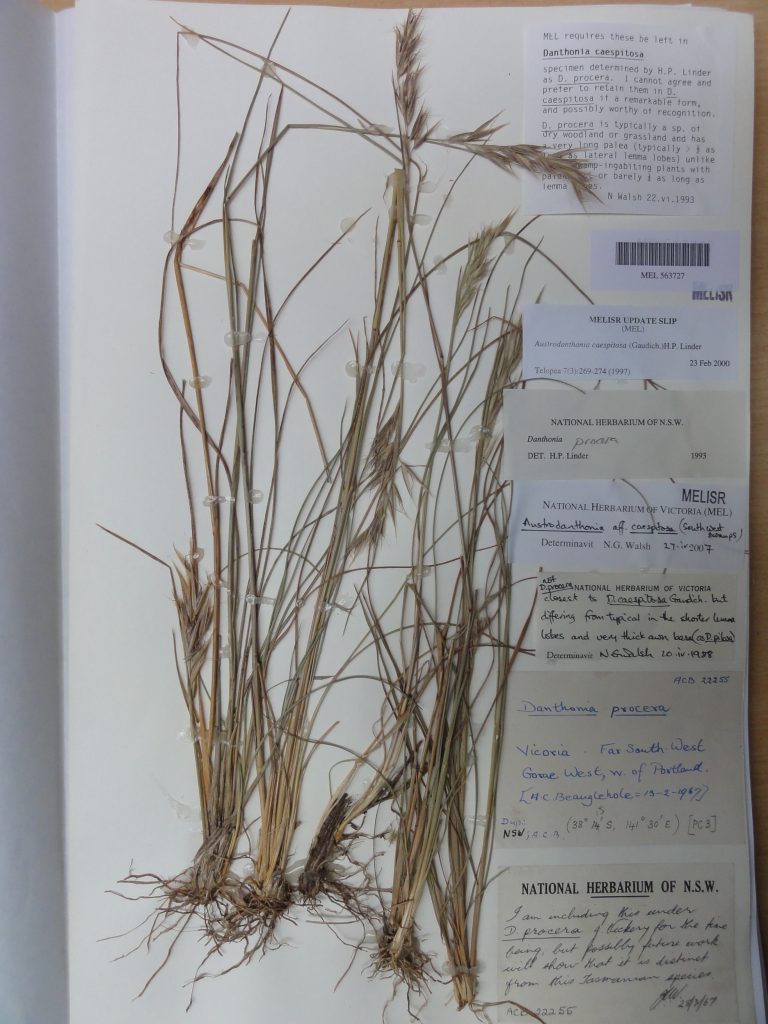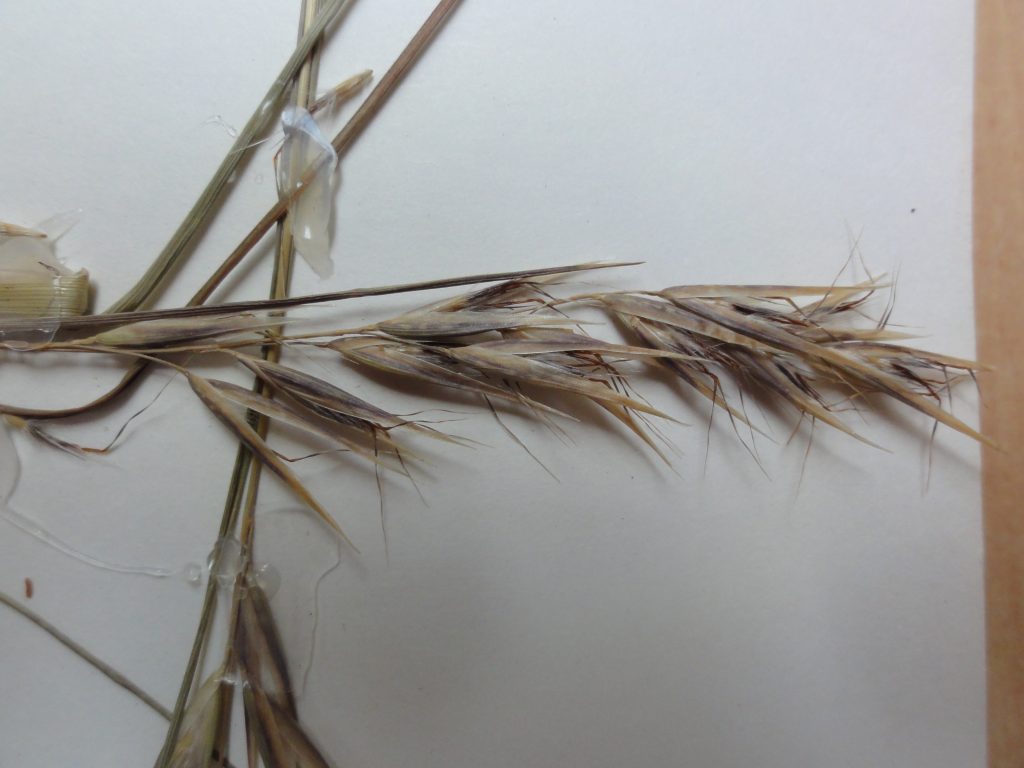The story of the long-lost giant purple wallaby-grass of Gorae West
Tasmania might have the Thylacine, but Gorae West has a long-lost giant purple wallaby-grass!
Last seen in the 1960s by legendary naturalist Cliff Beauglehole, this wallaby-grass is a stunner. Dr Graeme Lorimer introduced me to the species when I did his native grass course about a year ago. He is hopeful that someone in south-west Victoria will find this unusual species again.
The specimen is filed in the Herbarium as ‘Rytidosperma sp. South-West Swamps (A.C. Beauglehole 22255, Vic Herbarium)’, with the common name, ‘Porphyry Wallaby-grass’ (Porphyry means purple, and for the ancient Greeks was the colour of royalty). To add to the confusion, these names have been used to describe three separate taxa (probably all good species).
Graeme has provided a description and photographs of the Melbourne Herbarium’s specimen. If you would like the full description, please email me.

Rytidosperma sp. South-West Swamps specimen: A.C. Beauglehole 22255. Specimen at the Herbarium of Victoria (Photo: Graeme Lorimer)

Close-up of flowerhead of Rytidosperma sp. South-West Swamps specimen: A.C. Beauglehole 22255. Note the purple colouring on still visible on this badly faded 52 year old specimen. Photo: Graeme Lorimer.
The specimen is large, with stems up to 74 cm tall and tough leaf blades to 43 cm long, so the tussock could be half a metre diameter or more! The inflorescences (flowers) are between 7 and 9 cm long, which is quite long for a wallaby-grass. Looking at the lowest floret (seed) in a spikelet, the length from the base of the floret to the top of the palea is over 8 mm, which is very large for a wallaby-grass. The photographs also show the very dark purplish, lower part of the awns still visible on the somewhat faded 52-year-old specimen.
The species was collected in Gorae West, at ‘extreme upper reaches Little Moleside Creek, Kentbruck Heath’, and also ‘N of Penola – Dergholm Road, c. 0.5 miles W of Vic Border’. Graeme has checked these areas, but couldn’t find it in the few patches of native swampy vegetation left between the pine plantations. He has noted a smaller purple wallaby-grass in similar, poorly drained habitats around Kentbruck, Cobboboonee, Dergholm and the Narracoorte Coastal Plain more generally, particularly in disturbed areas beside forest tracks through wet heathland, but it is not the same thing.
So if you are out and about in swampy areas of the south-east of South Australia, or south-west of Victoria, keep your eyes open for the giant purple wallaby-grass. And if you find it, please let me know!

